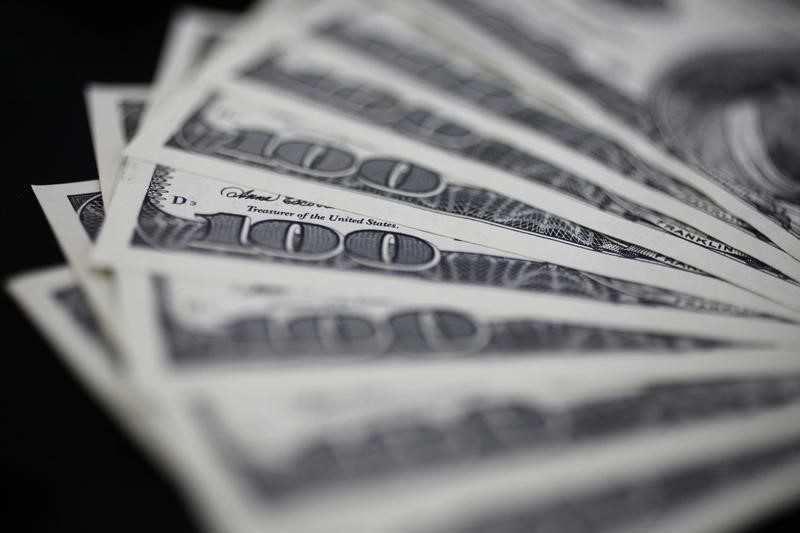
At 04:25 ET (08:25 GMT), the Dollar Index, which tracks the greenback against a basket of six other currencies, traded 0.3% lower at 104.340, after trading at its strongest level since mid-May earlier in the week.
The dollar saw some volatile trading on Wednesday, falling in the immediate aftermath of the U.S. inflation report, which showed consumer prices flat month-to-month in May against market expectations of a 0.1% rise.
Before paring some of these losses when the Federal Reserve left the funds rate on hold at 5.25%-5.5% and detailing that policymakers’ median projection for the number of cuts this year fell to just one, from three in March.
That said, “we continue to expect a first rate cut in September and a second cut in December,” Goldman economists said in a note.
This brings Thursday’s PPI release firmly into focus, with the headline figure expected to show monthly growth of 0.1% in May, a drop from 0.5% growth the prior month.
The core PPI release, which excludes volatile food and energy prices, is expected to show monthly growth of 0.3%, a drop from 0.5% growth the previous month.
“A soft PPI reading today will raise expectations of another ‘on-target’ 0.2% month-on-month core PCE reading and give both the Fed and the market a little more confidence that the central bank may be able to cut rates in September after all,” analysts at ING said, in a note. “This is why we have a down arrow on the dollar today.”
EUR/USD rose 0.1% to 1.0812, continuing to gain after rising 0.6% overnight, as traders digested more regional inflation data.
German wholesale prices fell by 0.7% in May compared with the same month last year, while Spanish consumer prices rose 3.6% on an annual basis in May.
“EUR/USD did well to spike to 1.0850 yesterday and probably argues that we are in some kind of broad 1.0720-1.0900 trading range for the near term,” said ING.
“Here, the two opposing forces will be softer US price and activity data potentially dragging the dollar complex lower set against French political risk, where a further risk premium could still be built into the euro.”
GBP/USD fell 0.1% to 1.2790, after rising 0.5% overnight to $1.2798 after the release of the U.S. inflation data, with the U.K. releasing its monthly CPI number next week.
“UK May CPI is released next Wednesday and the sticky core services component (5.9% year-on-year in April) may well come down,” said ING. “That is why we are reluctant to chase the current rally in sterling and can probably see the top of this year’s range holding for GBP/USD at 1.2850/2900.”
In Asia, USD/JPY traded 0.3% higher to 157.23, with traders now awaiting more cues on policy from the BOJ on Friday.
The central bank is likely to keep rates steady, but is expected to scale back some of its bond purchases in a bid to tighten policy.
USD/CNY gained 0.2% to 7.2519, close to six-month highs as reports of more U.S. trade scrutiny against China dented sentiment towards the yuan this week.
To read the full article, Click Here

